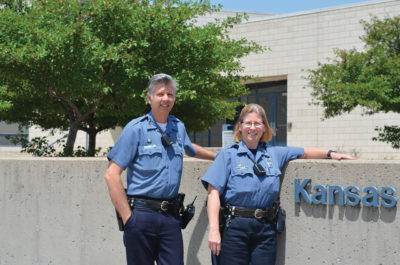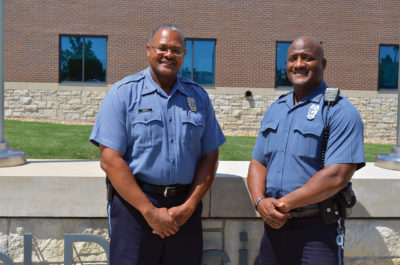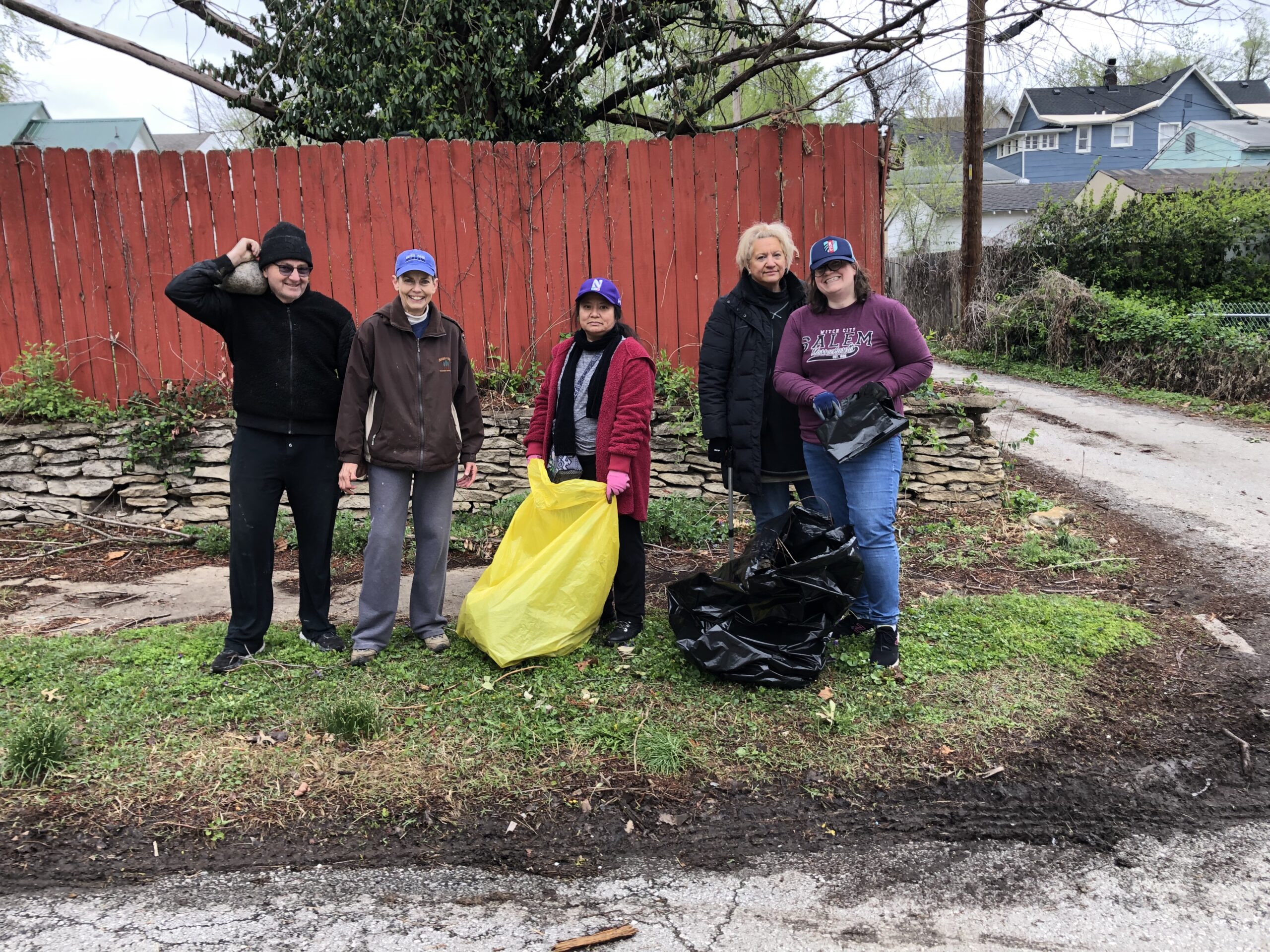
Paul Thompson
Northeast News
First there was one, then there were none, and now there are two.
The saga of KCPD’s Community Interaction Officer (CIO) position over the past two years has been a battle waged in the court of public opinion, beginning with significant neighborhood backlash to former Chief of Police Darryl Forté’s decision to reassign each patrol division’s CIO in August of 2016.
At the time, Forté suggested that every officer on the force should take up the role of a community interaction officer. Forte was defiant about the plan; suggesting that the unilateral decision wasn’t made for any one faction of the city, but for the community as a whole.
“Sometimes when there’s change, there’s pain,” Forte said at the time. “There’s going to be some pain, but just understand that I’m doing it for the right reasons.”
In reality, however, the rapid-fire rate of dispatch calls made the expectation a pipe dream: there simply aren’t enough hours in the day for patrol officers to do the community work necessary to fill the void of a dedicated CIO. Both Central Patrol’s Andy Hamil and East Patrol’s Greg Smith saw their CIO position go into a state of flux with Chief Forté’s August 2016 announcement.
“With the number of calls and the number of officers, it just didn’t work out. It’s a fantastic concept, but…” Hamil trails off, leaving the thesis temporarily unsaid. “How are you supposed to spend 30 minutes with them, you know?”
Smith spent some time out on patrol after Forté’s decision, though then East Patrol Major Joe McHale made sure that Smith still kept a handle on community concerns.
“I was going out answering calls; I was kind of doing a dual job,” said Smith. “You have to be prepared to adjust. So you just adjust. Somebody’s got to do it, and you’ve still got the community concerns and needs that you’ve got to address as well.”

After Forté announced his intention to retire in the spring of 2017, then-Central Patrol Major Rick Smith emerged as a local favorite to fill Forte’s shoes. Once Smith landed the job, it wasn’t long before he reinstated the CIO position that had served as such an important conduit for the community.
By 2018, Smith took things a step further: as of March 26, 2018, each of Kansas City’s six patrol divisions was assigned a second-shift CIO to work from 1 p.m. to 9 p.m. In short, Smith had doubled down on the CIO position that had been imperiled just a year and a half prior.
Historic Northeast residents are now served by four CIO’s: East Patrol Division’s Greg Smith and Patrick Byrd, and Central Patrol Division’s Andy Hamil and Holly Sticken. In both cases, there’s a degree of familiarity that makes the partnership a success.
Hamil and Sticken recently agreed to a joint interview at Central Patrol, and the familiarity was palpable. It’s been only a couple of months since the pair have been working together as Central Patrol’s CIO team, but it seems longer. In some ways, it has been: Sticken and Hamil have known each other for roughly 20 years.
“When she went over from a civilian position to law enforcement, we were in the same sector,” Hamil said. “What year was that?”
Sticken was quick with a reply: it was 1998.
“As a matter of fact, in my very first foot chase, him and his partner came up when I caught the guy,” Sticken said. “They were like, ‘Where’s your car?’”
The car, it turned out, was several blocks away, unsecured, with the driver side door still open.
“They circled around and they secured my car,” Sticken remembers. “The chase is on, and you’re just so focused on catching the person that you forget everything else. I’ll never forget it: it was three juveniles in a stolen vehicle, and they had been joyriding, drinking. They pulled over when I turned on my lights and sirens, and they all three jumped out. I got one, and my field training officer caught the other one.”
Hamil said that he’s seen the “squad car left unsecured” bit before, but mostly on television.
“In every ‘Cops’ episode that I can remember, officers just open the door, leave it open, and run out,” he said with a laugh.
Hamil couldn’t remember his first foot chase, but he can’t forget his last one.
“I ripped my pants in my last chase. It was just last year, going over a chain-link fence with a Tac officer,” Hamil recalls. “It was a stolen auto, and they had been driving crazy all over the city. They ended up over here off of 34th and Highland.”
That level of familiarity – easy stories of unsecured patrol cars and torn pants – extends at least in some fashion to East Patrol Division, where Greg Smith and Patrick Byrd maintain a similarly easy-going relationship. In fact, Smith served as Byrd’s training officer once upon a time.
“When all this came about – when it was being tossed around by the Chief and the command staff – the Major came to me and asked who would be another good CIO,” Smith remembers. “That’s when I told them about Pat Byrd.”
What brought Byrd to mind, Smith says during a recent joint interview at East Patrol, is that his former trainee possessed a community-minded approach to policing. It would be an ideal fit for a community interaction officer, he figured.
Byrd had spent the previous 18 months working with the Kansas City No Violence Alliance, but he was quickly intrigued by the opportunity to get back in the community, working with Smith.
“I know he has a heart for the community, he has a heart to help people, which I have myself,” Byrd said. “It was easy to say yes to that. It was an easy fit, and easy yes for me.”
Though Byrd says that he’s enjoyed his first months as a CIO, he concedes that it isn’t exactly what he was expecting when he agreed to the switch.
“I didn’t think it would be so overwhelmingly busy, but it’s something that I like. It gives me a sense of accomplishment, rather than chasing radio calls, chasing 9-1-1 calls,” Byrd says. “With these, you can be more proactive, you can network with different individuals and different businesses, and work on solving those problems they’re experiencing.”
In both East Patrol and Central Patrol, the biggest recurring issues are familiar. In both sit-down interviews, the CIO teams bring up the persistent issue of homelessness.
“I literally just came off of midnights, and the majority of the calls that we had were dealing with emotional people and homeless people,” Sticken said. “It’s a big problem. We’re going to be starting at the base and trying to figure out the best solutions.”
To Sticken, the giving nature of Kansas Citians has served as both a blessing and a curse.
“We have a very caring and giving community; we really do,” Sticken said. “But I think with that comes a cycle that is putting a band-aid on a gaping wound.”
Hamil agreed, suggesting that a large chunk of the CIO calls at Central Patrol are at least tangentially related to homelessness.
“Anecdotally, I bet that 20% of the calls we receive involve transients or people with emotional disorders having a crisis,” Hamil said.
Over at East Patrol, Smith and Byrd see homeless camps scattered throughout the division. In one instance, Smith says he came across a homeless man carrying a .45 revolver. In another instance, he saw an individual wielding a machete. The threat of violence is why Smith feels that KCFD has a duty to assist with the task of cleaning up homeless camps in Kansas City.
“The reason why it falls more on KCPD is because of the danger level. Sometimes these camps are booby-trapped. They arm themselves,” Smith says. “You never know what you may encounter; you just can’t send City people into those camps, because we don’t want anyone getting hurt.”
Byrd has been shocked at the size of the homeless camps within East Patrol. He described one such camp on the city’s east side, where transients had stacked dozens of tires to form the perimeter of a de facto village. The East Patrol CIO’s estimated that four to five dump trucks will be needed to haul away the trash and debris from the camp, which is nestled below a thicket of heavy brush. What’s more, there have been reports of stolen copper and aggressive panhandlers operating around a nearby daycare facility.
“I didn’t realize it until I came back to the field in August of last year and I was back on the front lines. I saw first hand what we were dealing with,” Byrd said. “It’s costing lots of money to rid those areas of homeless camps.”
Interfacing with community leaders remains a key facet of the job, as well. Smith told the Northeast News that at one point, he was asked to attend almost two dozen neighborhood meetings every month. With Byrd now in the fold, the CIO’s can split those obligations accordingly.
“When I was by myself, I had 23 neighborhood meetings a month. Some days, there are three meetings stacked on top of each other at the same time,” Smith said. “He’ll go to some one month, and then I’ll go to some, so that the neighborhood will see us both. The Chief still wants us to get out to meetings to have that face time with the citizens.”
Hamil and Sticken have reported a similar dynamic in their patrol division. With Sticken working evening hours, community members who work day jobs can still build a rapport with their community interaction officer. Like Byrd at East Patrol, Sticken has also helped ease Hamil’s load when it comes to having a presence at neighborhood meetings.
A lot of functions are held at night, so it relieves stress from him,” Sticken said. “They have both of us that they can tap into now.”
At least so far, the CIO’s appear happy in their present roles. The solution-oriented Byrd likes the problem-solving nature of the position.
“I like to be able to focus on a problem, and I like to be able to provide resources to a problem to see if we can get that problem solved,” Byrd said. “So it’s been very beneficial to me, and I also think it’s been very beneficial to the community.”
For Sticken, life as a CIO runs in the family.
I’m loving it,” she said. “My husband was a CIO way back in the day when I was a young officer.”
After more than 18 years working patrol, Hamil has a special appreciation for the life of a community interaction officer.
“I like hearing about the follow-up; I like getting the thank you cards, he said. “It means a lot, and just motivates you to continue.”















